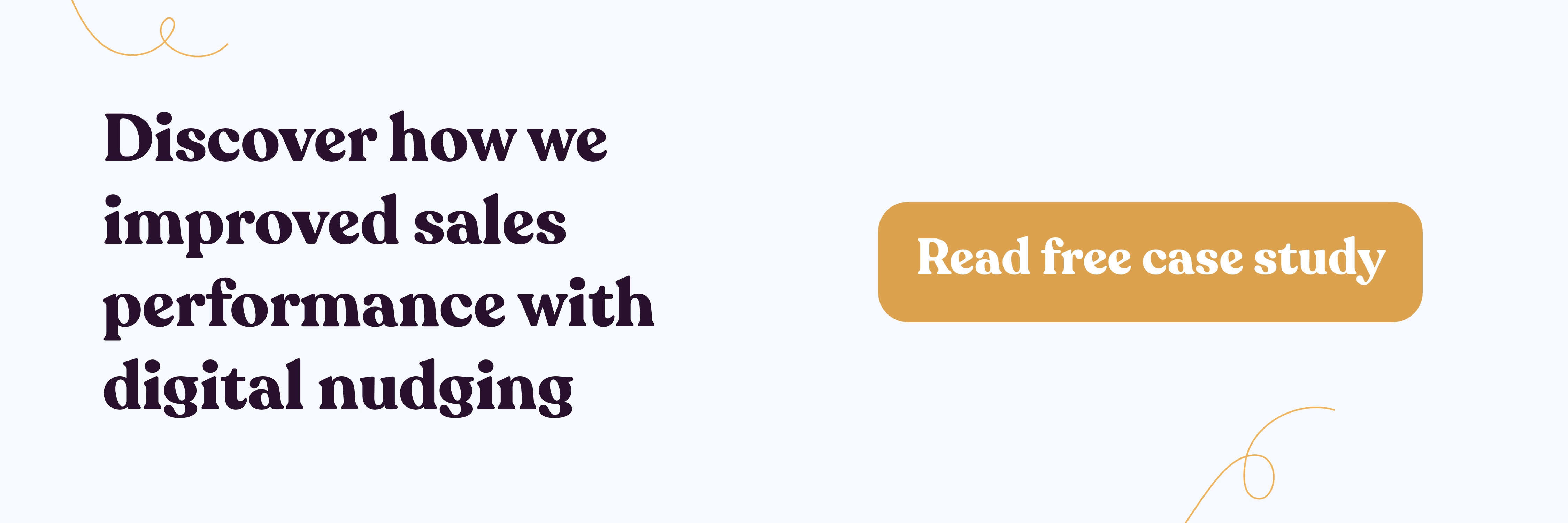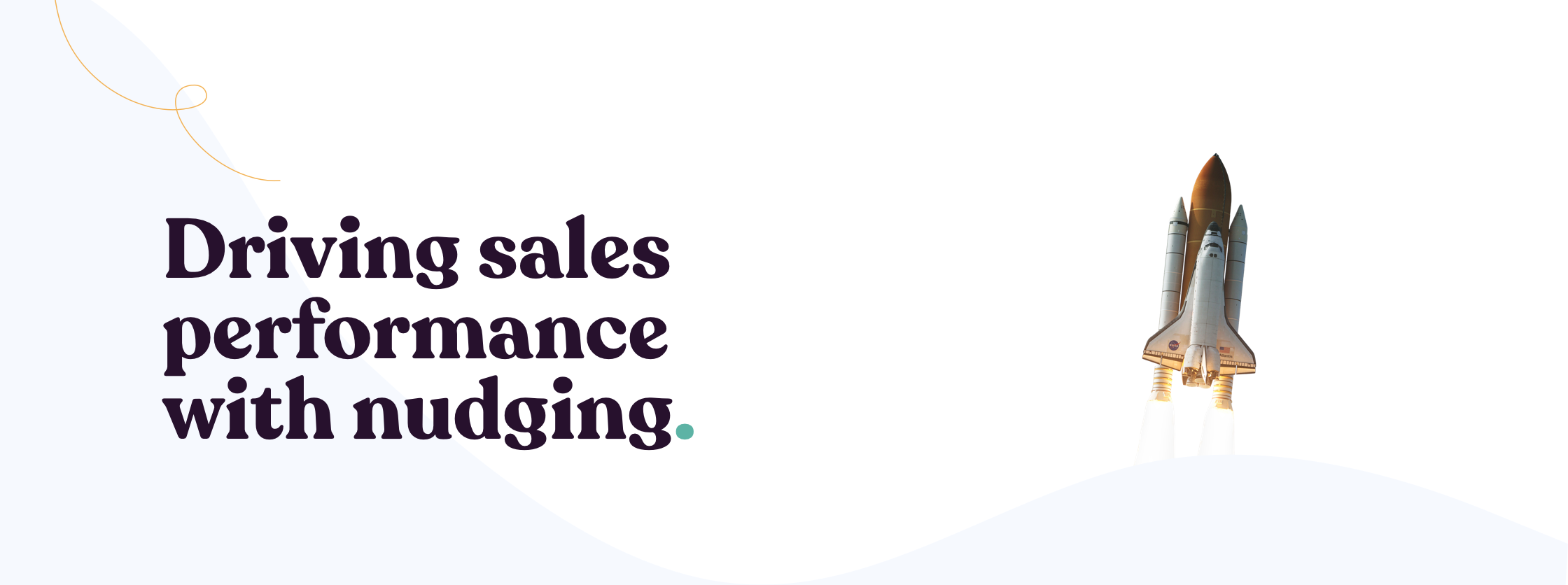Driving sales performance with nudging
Nudging has been around for a long time to steer people to make better decisions. Now, with technology omni-present in our daily lives, nudging has found its way into the digital and corporate world. This allows organisations to improve overall business performance by applying nudge theory.
Use of digital nudging
Digital nudging was first used in the public sector, more specifically by government agencies all over the world. They have been using digital nudges and insights of behavioural economics for more than a decade to drive people into taking desired actions, such as reducing litter or paying their taxes on time. Over the past couple of years, the corporate world and non-governmental organisations have started acknowledging the benefits of nudging and now they use digital nudges worldwide to adapt to changing economic conditions, new technologies, globalisation, competition, or to improve overall business performance in general.
Digital vs offline nudging
Digital nudging is not really that different from ‘regular’ nudging. It’s still an approach that is based on behavioural economics and insights. The main difference is that digital nudging is used to affect the choices of individuals in digital environments, like for example a CRM. The goal of digital nudging is to stimulate (employee) behaviour by altering the design of user interface (UI) elements, for example graphical design, wording or small features.
Without realising it, you’ve already been nudged a couple of times today. Don’t agree? Well, how many Facebook or Instagram notifications have you received on your smartphone, trying to get you to open the app and spend time on it? This is an example of digital nudging, although these notifications can also be seen as annoying, which a good nudge should not be. If we have a look at how this translates into a business context, we can say that email, push notifications, gamification and SMS are perfect examples of digital nudges to steer employees into taking desired actions.
Nudging as a tool for change
Nudges can be of real value in a business context. When applied properly in the corporate world, nudging can steer employees to make better choices throughout their day, especially when online technologies enable organisations to more frequently interact with employees. This makes digital nudging a very useful tool for change management in any organisation, as it helps reach the goal of establishing a sustained change in behaviour. This is one of the reasons why an increasing number of organisations are adopting digital nudging as part of their change management strategy.
The current fast-moving competition and changes in the workplace require organisations to deploy change programs to alter the behaviour of their employees. Digital nudges that are thoughtfully designed and tailored can be an effective part of an organisation’s broader change program, as they help employees to consistently act or react in a certain way, which is key to successful, sustained behaviour. Let’s say for example that a lot of sales team members forget to complete details in your CRM and you want to change their behaviour so they’ll always enter the data. What you can do is nudge that group near the end of their work day via for example SMS, asking them if they’ve completed the details for all their appointments that day.
The above is a just short and quick example of a nudge, but it will surely help you achieve more consistent behaviour. It’s important to always keep your nudges simple, authentic and connected to a purpose to make sure employees view them as constructive and useful. Never point out an employee’s shortcomings via nudges, rather emphasise how they can become better and reward their accomplishments whenever possible.
Another advantage of digital nudging is its low deployment and maintenance cost. In addition, digital nudges also create a lot of actionable data. That data can be reviewed and analysed to assess the impact, as well as to enable organisations to easily apply an agile approach involving iteration and continuous improvement.
Get the most out of digital nudging
To get the most out of digital nudges, it’s best for managers and organisations to focus on specific behaviours they wish to change. What we at salesnudge always recommend to our clients is that they prioritise their changes in behaviour. Then they can start testing their top priorities via smaller nudge campaigns in small segments of their organisation. Based on the collected data, they can then see what has worked (or what didn’t) and start scaling the campaign to a broader part of the organisation. By following this process, you’ll be working in a data-driven mode where no unnecessary resources such as time or money will be wasted.
Given digital nudging is still quite new to affect employee behaviour, many managers or organisations might not be fully up to par with the social science on which it is based. So, for nudges to succeed, they need to know that timing and framing are very important. This means that the digital nudges have to be shaped to match employees’ spontaneous thinking and tendencies to take action. What we’ve noticed at our clients is that it is of utmost importance to break the process of the behavioural change down into small steps. This makes it much easier for employees to be willing to change their behaviour and increases the effectiveness of digital nudging. If you want to get the most out of your digital nudges then you also need to make sure that they only show up when needed and are tailored to a specific employee.
When part of a larger change management plan, well-conceived and executed nudges can be very effective to achieve the employee behaviour that leads to a better sales performance. And if you want that change to spread quickly throughout your organisation, you have to go digital.
Curious about how we use digital nudges at salesnudge? Contact us to find out more or download our latest case study where we used simple, yet effective digital nudges to improve sales performance.




